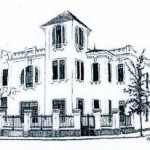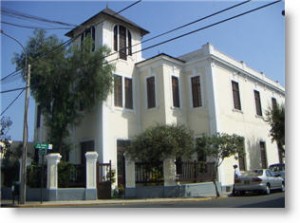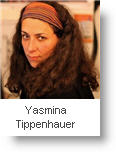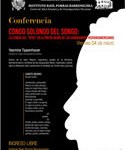By Tony Darrington
 Few people will immediately associate The Universidad Nacional Mayor de San Marcos (UNMSM) with Miraflores – more likely it will be linked to the Parque Universitario downtown or the huaca-strewn campus alongside Lima’s “longest road” – the Avenida Universitaria. However, the UNMSM does have a solitary outpost ‘by the sea,’ wedged between the antique shops of Alfonso Ugarte (the continuation of Av. La Paz) and one block off Ricardo Palma. This outpost is the University’s Instituto Raúl Porras Barrenechea (Center for Higher Studies and Peruvian Research).
Few people will immediately associate The Universidad Nacional Mayor de San Marcos (UNMSM) with Miraflores – more likely it will be linked to the Parque Universitario downtown or the huaca-strewn campus alongside Lima’s “longest road” – the Avenida Universitaria. However, the UNMSM does have a solitary outpost ‘by the sea,’ wedged between the antique shops of Alfonso Ugarte (the continuation of Av. La Paz) and one block off Ricardo Palma. This outpost is the University’s Instituto Raúl Porras Barrenechea (Center for Higher Studies and Peruvian Research).
What better company could you have than the entertaining stories of Palma (his house, now a museum, is just round the corner) and the security offered by the presence, in spirit, of Ugarte, the great hero of Iquique, Tarapaca and Arica (no, he didn’t ride his horse off the cliff of the Moro in order to save the Peruvian flag from the Chileans, but he did cancel a trip to Europe and the money he saved financed a company of troops, which he personally raised to defend the city and port of Iquique).
 There are now not too many of the traditional Miraflores houses left from the time of its belle époque, this one complete with a third floor tower (to catch the sea-breeze and provide a view towards the coast and – in the other direction – over the intervening fields past Limatambo to the capital itself).
There are now not too many of the traditional Miraflores houses left from the time of its belle époque, this one complete with a third floor tower (to catch the sea-breeze and provide a view towards the coast and – in the other direction – over the intervening fields past Limatambo to the capital itself).
A real estate agent’s dream (in 1870, three minutes walking distance to the new Miraflores train station), the house is yet more impressive on the inside as it retains old-style decoration and furniture whilst housing extensive collections of books and articles which belonged to or relate to Porras Barrenechea, writer, diplomat, senator, cabinet minister, school teacher and university professor (1897-1960).
But the house is also fast becoming another Miraflores “cultural center” hosting academic and also entertaining events – which leads us to a jewel within a jewel.
 On March 4, 2011 the Institute hosted a ponencia on the theme ‘Congo Solongo del Songo: la lengua del “otro” en la poesia negra de las vanguardias hispanoamericanos’ – an exploration of “black” poetry focusing on Nicolas Guillén (Cuba) and Luis Palés Matos (Puerto Rico) presented by Dr Yasmina Tippenhauer, director of the Latin American cultural center Tierra Incognita in Geneva. The seminar was illustrated with selected poetry read by David Alarco who had brought along Kitty Villaverde and Fernando Rentería from the Taller de la Kontroversi. What then ensued was an extraordinary and prolonged musical finale revealing yet another aspect of Lima’s multifaceted talent: the improvisation of the décima* – and a representative of the Santa Cruz family was in the audience to nod approval.
On March 4, 2011 the Institute hosted a ponencia on the theme ‘Congo Solongo del Songo: la lengua del “otro” en la poesia negra de las vanguardias hispanoamericanos’ – an exploration of “black” poetry focusing on Nicolas Guillén (Cuba) and Luis Palés Matos (Puerto Rico) presented by Dr Yasmina Tippenhauer, director of the Latin American cultural center Tierra Incognita in Geneva. The seminar was illustrated with selected poetry read by David Alarco who had brought along Kitty Villaverde and Fernando Rentería from the Taller de la Kontroversi. What then ensued was an extraordinary and prolonged musical finale revealing yet another aspect of Lima’s multifaceted talent: the improvisation of the décima* – and a representative of the Santa Cruz family was in the audience to nod approval.
 The Director of the Institute is the well-established academic Dr Jorge Puccinelli who has acted with foresight and astuteness (there was an audience overflowing into an annexe with a video-link).
The Director of the Institute is the well-established academic Dr Jorge Puccinelli who has acted with foresight and astuteness (there was an audience overflowing into an annexe with a video-link).
Where: The Instituto (Casa-Museo) Raúl Porras Barrenechea is at Calle Colina 398 (corner of Ugarte), Miraflores, Lima 18. Tel: 619 7000 anexo 6102. [email protected] http://institutoporras.blogspot.com/
* The Décima (“ten (lines)”) or espinella is an octosylabic, ten line stanza with a rhyme scheme of abbaaccddc. It is of Spanish origin, supposedly invented or perfected by Vicente Espinel (1550–1624), although found as early as 1510. The décima is a form especially popular in New Mexican folk-song, where it flourished during the 19th and the early part of the 20th centuries. It was one of the most popular song forms in fifteenth-century Spain and has had a very strong presence in Latin America (Puerto Rico, Cuba and Mexico), where it is still commonly heard, and of course in South America. The poetry can cover a wide range of subjects, from philosophical or religious to lyrical and political. In Peru it is particularly popular among Criollo and Afro-Peruvian musicians and performers, using humor to typically satirize or challenge a target who then responds in kind.





